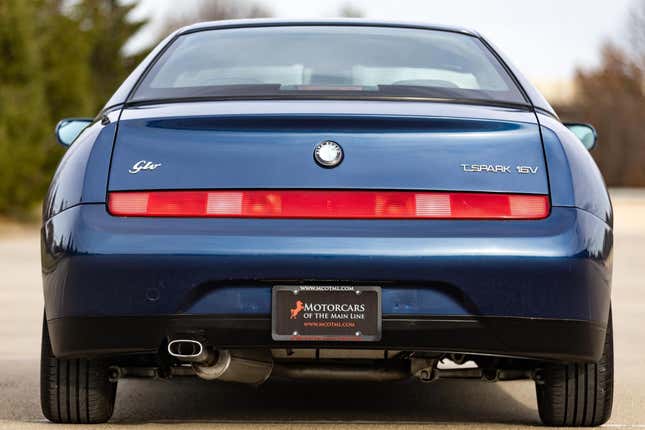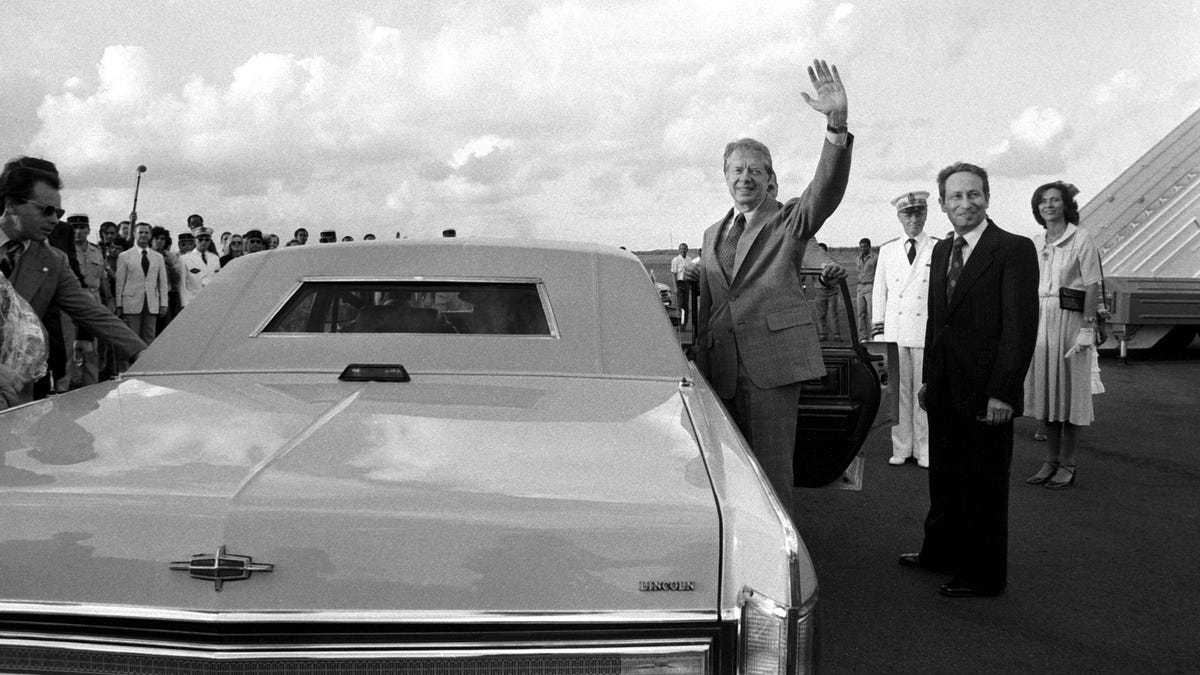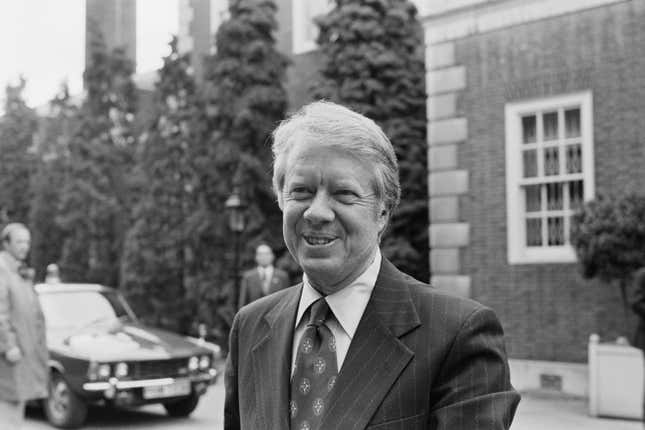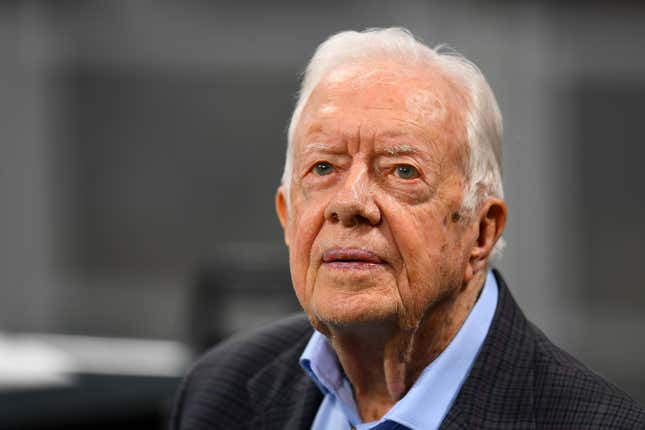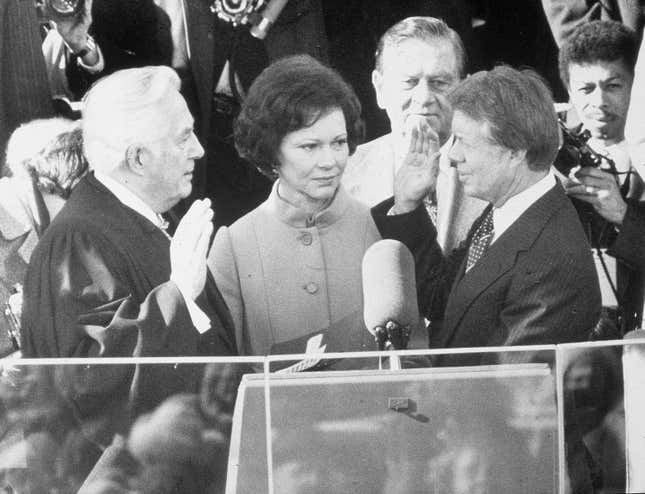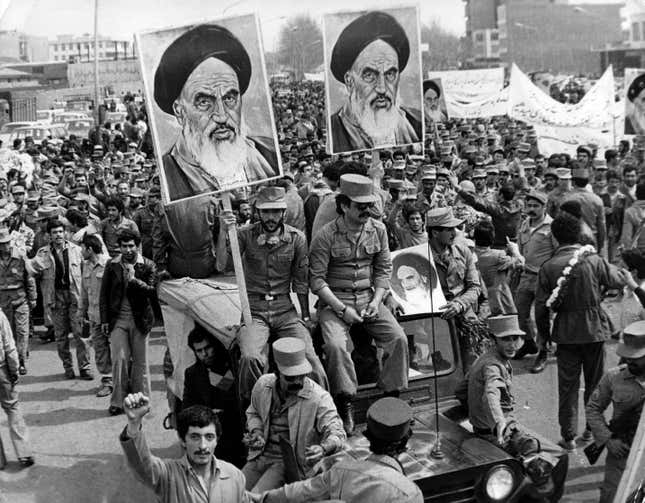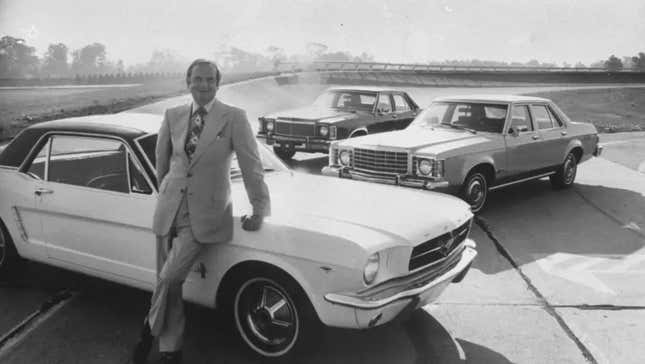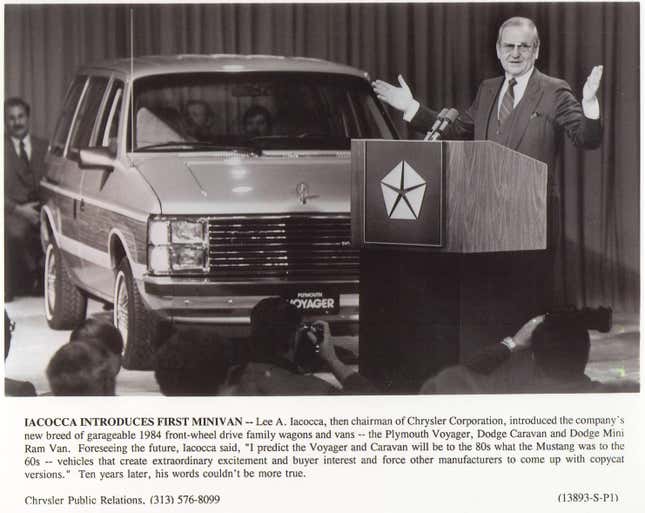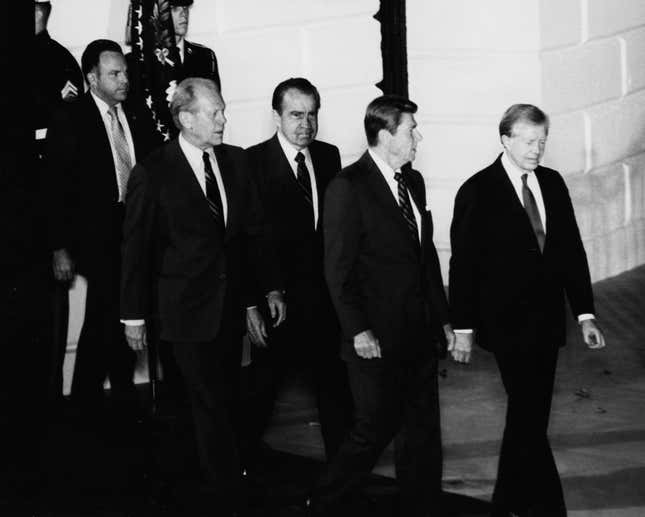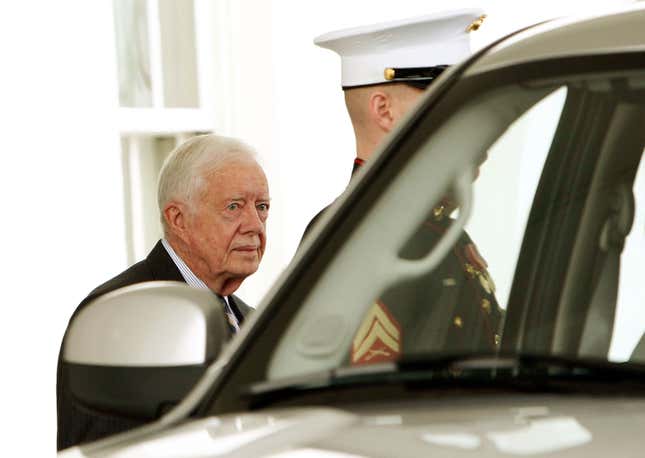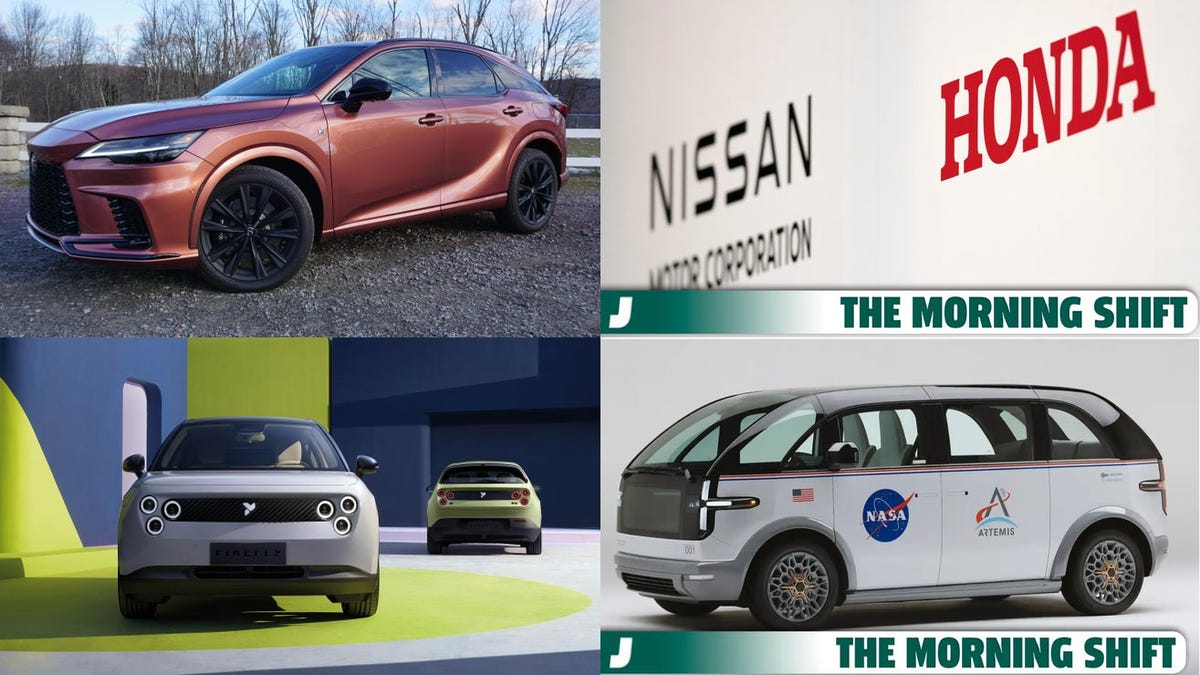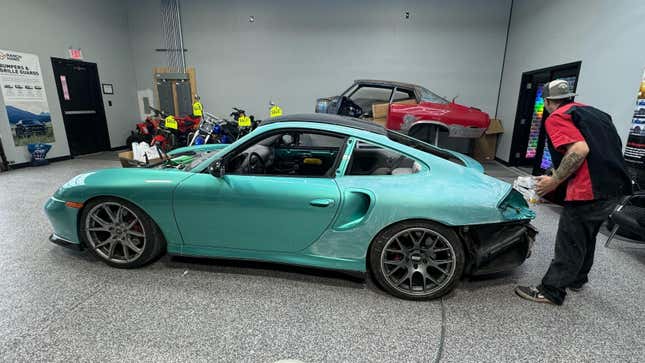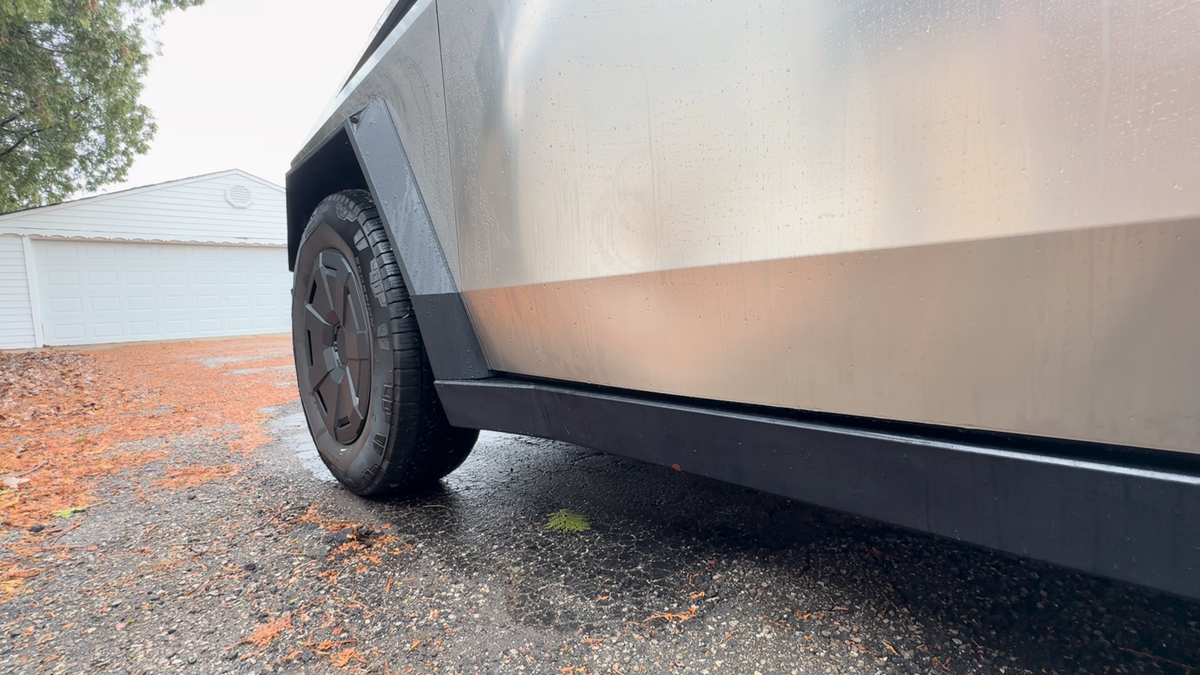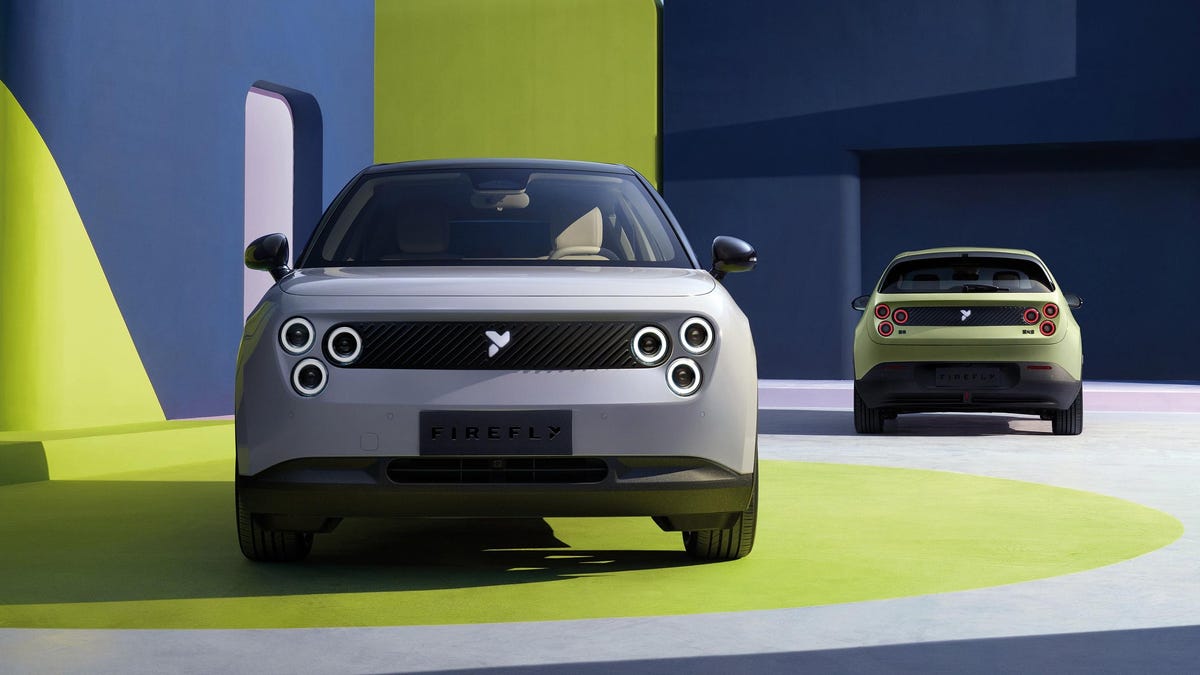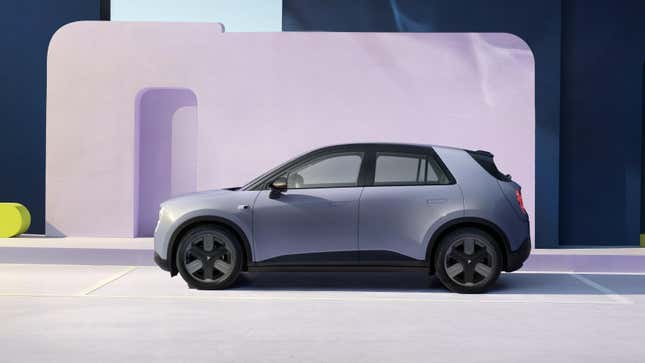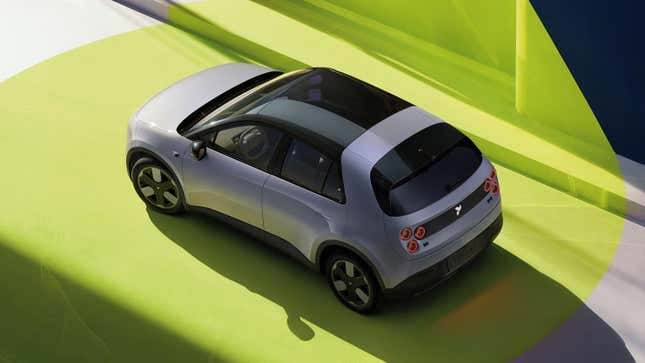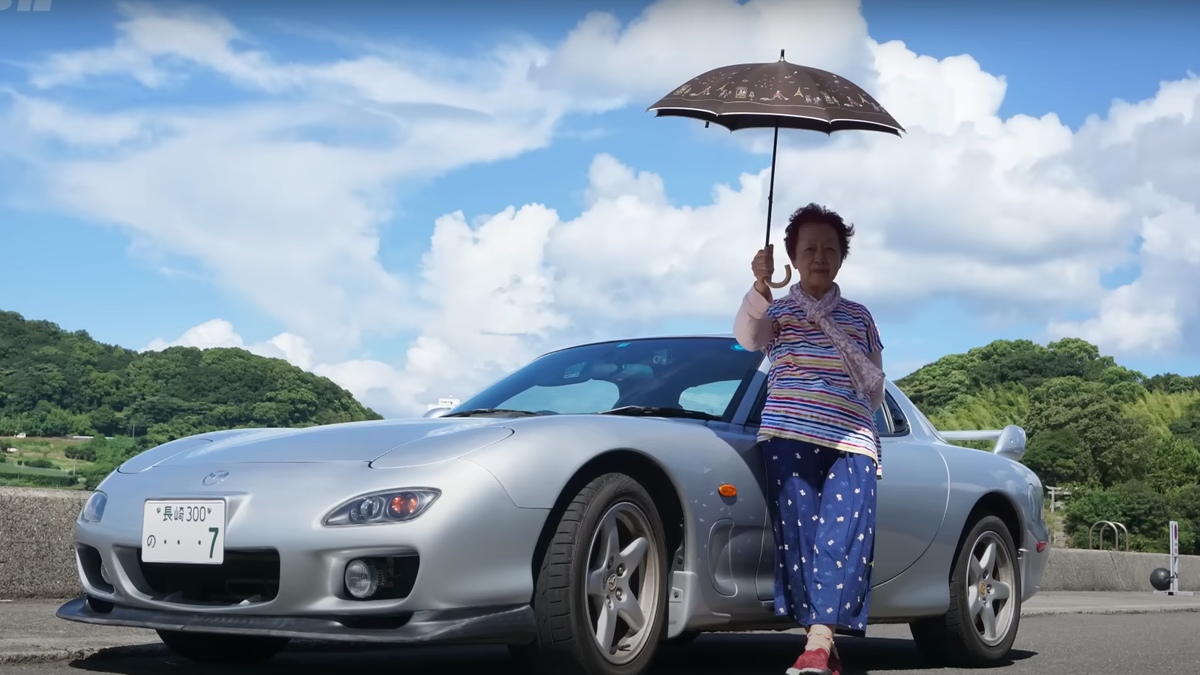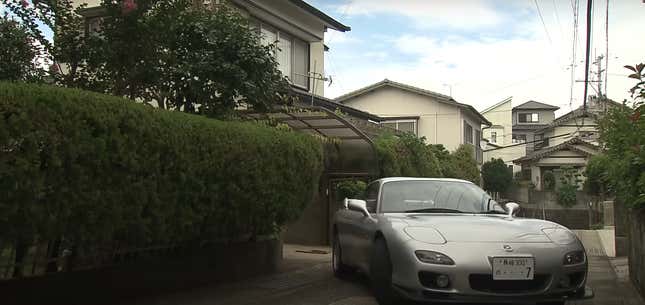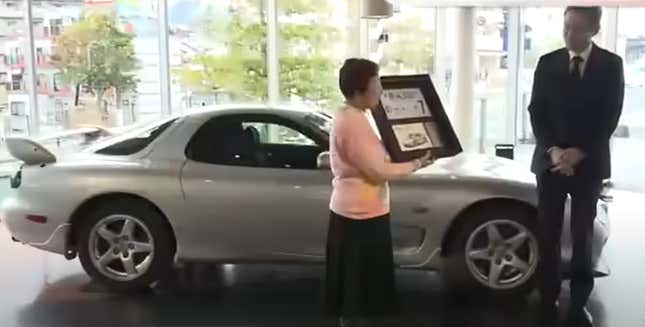Every morning I remind myself that I am the luckiest guy in the world, and that mantra continues to serve me well. Recently, the powers at be must have really heard me, because Mercedes-Benz invited me out to Las Vegas to experience my very first Formula 1 race. How did I get from Los Angeles to Vegas, you ask? Mercedes loaned me an astronomically powerful 2024 Mercedes-AMG GT63 S E Performance 4-Door Coupe for just the occasion, and then put me up in a 33rd-floor room when I arrived for when I wasn’t rubbing shoulders with the elite. Not a bad start to a race weekend.
Formula 1 has always been cool in my eyes, but I have commitment issues, and of the very few things that I follow closely in this world, none of them are sports. Over recent years more Americans have woken up, smelled the glorious race fuel and discovered an appreciation for the sport, so I figured it’s about time for me to give it a fair shot, too. From my limited knowledge of the sport, I expected the experience to be quite opulent, but I never expected what was to come from my weekend in Vegas at the hands of Mercedes.
Full disclosure: Mercedes-Benz loaned me an AMG GT63 S E Performance Four Door Coupe to drive out to Vegas, put me up in a fancy hotel, fed me lots of delicious food, and facilitated a truly once-in-a-lifetime experience for me. I got to sit passenger for a hot lap of the circuit, I got to meet the driver who ended up winning the race, I got to tour the pits and witness some of the race from inside Mercedes’ garage. It was a brilliant weekend, for which I am beyond grateful.
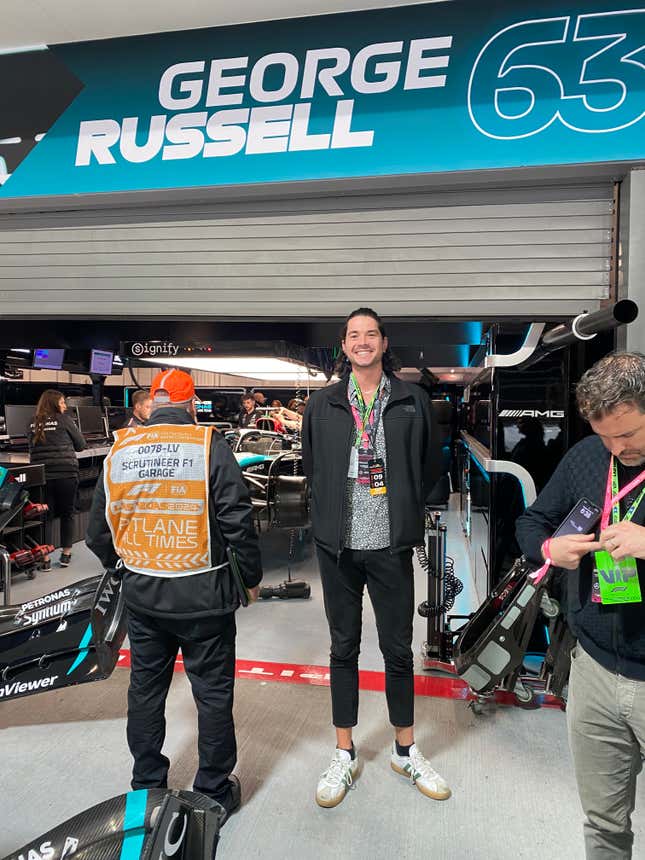
Visiting fabulous Las Vegas is always an assault on the senses, be it the blinding lights on the strip, the taste of food from world-renowned restaurants, or the arresting scent of Virginia Slim Menthols as you walk through the crowded casino floor to reach your hotel room. When I pulled up to the Wynn valet in the AMG GT, I was shocked by the hordes of race fans decked out in their gaudiest outfits topped off with a baseball cap emblazoned with their favorite race team’s logo. There were numerous model F1 cars inside the lobby, and signs welcoming fans as far as the eye could see. Consider me intimidated.
I rushed up to my room to freshen up before what was described to me as a casual dinner, and bopped back down to meet the chauffeur to get whisked away. We went to a decadent steakhouse, where I was surprised to be guided past all the tables and to a private room that was entirely padded in black tufted vinyl. The door opened and I suddenly realized that our arrival was interrupting a very intimate question-and-answer session with the man who turned out to be the race winner later that weekend, Mercedes-AMG Petronas F1 driver George Russell. I slinked to my seat as quickly and quietly as a boisterous 6-foot-8 human could, and enjoyed a decadent dinner and some exciting conversation before heading out to the track to catch qualifying.
Rocking up to the race track was so special. Again, Vegas is always a spectacle, but knowing that examples of the pinnacle of automotive engineering would be blasting by the usual sights was intoxicating. Or maybe that was the champagne. Either way, I was buzzing to watch some racing. After exploring the paddock a bit we headed up to the Paddock Club for a bird’s eye view of the start/finish line, where we caught the tail end of qualifying. Witnessing the speed with which these machines scream around the circuit was straight up exhilarating, not to mention the other sounds and smells of a race track. The unsuspecting young fellow I had interrupted at dinner had qualified in pole position, and the Mercedes section at the Paddock Club erupted with applause. It was time for a quiet drink and then off to bed to prepare for race day.
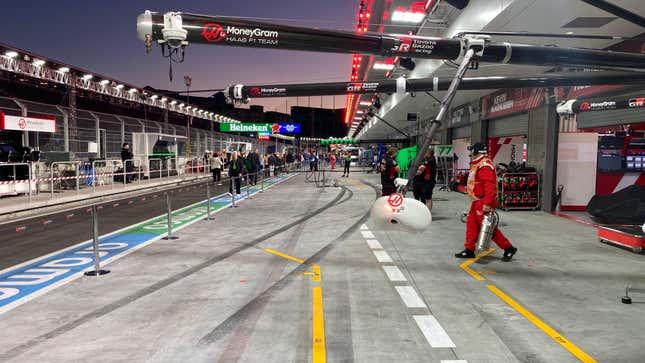
The Las Vegas Grand Prix is one of a handful of F1 races that take place at night, which allows the city to mask its cigarette butt–lined streets in a shroud of darkness that also serves to highlight the strip’s world famous light displays. I was grateful that we got to sleep in on race day since I had been running myself ragged for days leading up to my trip. We learned at brunch that we were going to get a chance to ride along for a hot lap of the race circuit with a pro driver. I love any track time I can get, so by the time we departed the hotel around 4 p.m., I was an eager fella to say the least.
I thought qualifying day was exciting, but as soon as we approached the circuit on race day I knew that this was a different animal. All prep work was complete and the entire 3.8-mile circuit was bolstered by thick crowds and enticing activities, but I was there for a freakin’ hot lap, so we headed right down to the track where we snagged helmets and awaited our pre-hot lap briefing. I stood next to the Mercedes pit with my mouth agape, slowly rotating to look around and not caring that I looked like a day-old slice of pizza being microwaved directly on the turntable. The stands were mostly empty and the track was surprisingly quiet, but I knew that would all change in just a few hours. We were briefed and I followed the herd of VIPs that headed out to the starting grid to meet our respective cars, brushing shoulders with the likes of Mr. Beast and various other folks I vaguely recognize from the interwebs. Since we were hosted by Mercedes, we stood next to a bright red AMG GT63 S, this time the real coupe with just two doors. I propped myself up against a barrier and proceeded to re-initiate jaw-dropped, day-old pizza in a microwave mode until my turn finally came.
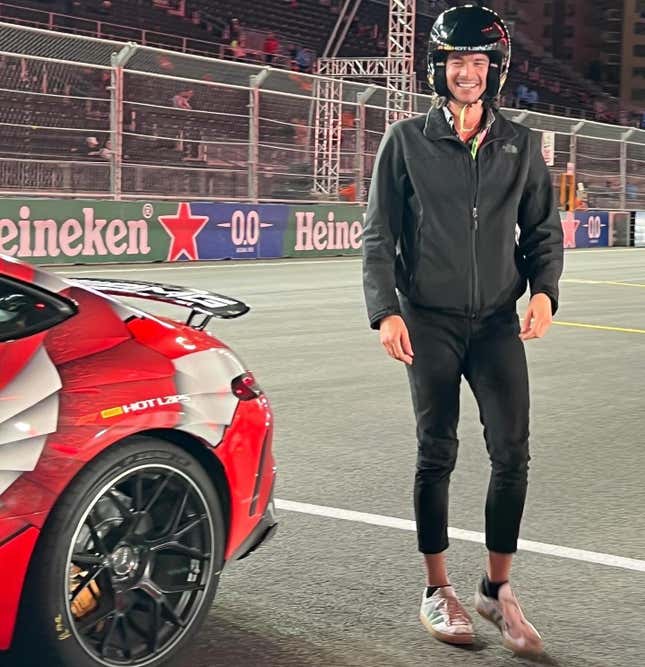
Most teams had their own road cars to take on hot laps — Mercedes with the AMG GTs, McLaren had Arturas, Aston brought Vantages and DBXs, and there were some Ford Mustangs out there too. I strapped on my helmet, hopped into the AMG GT, and tightened my seatbelt. We shot away from the grid and there was no introductory period, it was just flat out as soon as we left the grid. My driver was giggling the entire time, and so was I as we ripped through the surprisingly tight turns of the course. On the back straight we blew past an Artura, reaching 176 mph as things got a bit squirrely before we stomped on the brakes and prepped for the next turn. I was trying to take everything in, but all I could focus on was the speedometer and the rapidly decreasing distance between our car and the concrete barriers whizzing past just a few inches away. As we rounded the last corner and pulled back into the pits, I unbuckled my seatbelt and miraculously my wobbly knees didn’t buckle underneath me as I rose out of the car in a fit of nervous and ecstatic laughter. That was nuts.
We then wandered the pits where I again brushed shoulders with Hollywood elites and watched each driver strut out to immense applause. We rushed upstairs to the Paddock Club and watched from our lovely heated perch where we were served cocktails and gorgeous lobster dinners as things on the ground started getting serious.
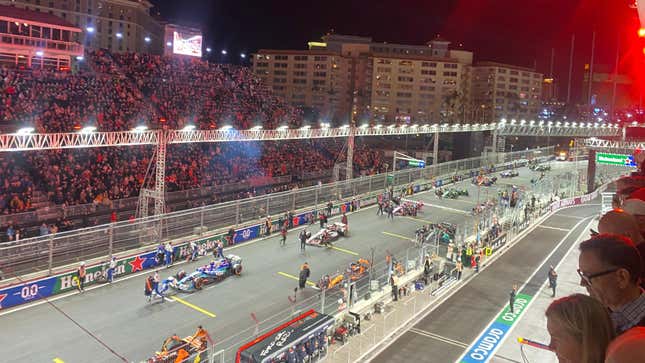
The energy as the teams wheeled their respective race rigs out to the grid is really difficult to put into words without sounding cliché. The stands that were nearly vacant earlier were packed shoulder-to-shoulder, and the energy was electrifying. The teams all swarmed the cars as they desperately worked to keep the tires warm and sticky in preparation for the chilly desert tarmac. More famous people in eccentric spangly getups and their respective entourages cruised between teams and newscasters on the grid as we watched from above. The televisions on the starting arch began a countdown, and the crowd cleared the grid. Soon it was just the cars revving, the smell of their exhaust, and a shockingly quiet crowd eagerly awaiting the start.
Unbeknownst to me, an F1 virgin, the drivers complete a formation lap immediately prior to race start, so at first I was surprised when the drivers left in a staggered formation, but realized what was going on as soon as they started swerving to keep their tires warm. The drivers returned to the grid, doing the automotive equivalent of champing at the bit by doing one final burnout before aligning in their spots and revving their engines. The line of lights on the starting arch gradually began illuminating red from left to right, until they were all glowing red. The lights shut off, and the cars rocketed away from the start. My first F1 race had begun, and the final car to leave the line was the bright red medical car that happened to be a Mercedes-AMG GT63 S 4-Door Coupe. My press car is quicker than the official F1 medical car? I thought to myself. That’s dope.

The first lap was underway, and I nearly gave myself a whiplash-concussion combo by trying to follow each car as they rounded the final turn to start lap two. I sure learned a lesson quick: Don’t try to follow the cars with your eyes, just focus on a spot the cars will pass by. Our boy George Russell had clinched pole position in qualifying, and he immediately opened up a staggering lead on the pack, upwards of 10 seconds. Needless to say the Mercedes section was abuzz with pride and excitement. In an impressive turn of events, the other Mercedes driver, some guy named Lewis Hamilton, was fast enough to climb from his starting position in 10th all the way up to second behind his teammate in a short amount of time. Having experienced the hot lap of the track just hours earlier really allowed me to feel connected to the race, and made me better understand the strain that these drivers undergo over the 50 all-out laps of the circuit. (That was a joke, by the way. I know who Lewis Hamilton is and yes, I was fangirling.)
The racing was brilliant. Our drivers performed exceptionally well, setting numerous fastest laps throughout the course of the race. What really boggled my mind was watching the pit stops from above. I could hardly process how rapidly and efficiently the teams managed to swap out all four tires and get the drivers back out onto the track.

We also got to go down and sit in the garage during the race. An announcer explained everything going on in front of us, and we got to walk through the garage as the race was happening, which was simultaneously enthralling and terrifying. As a giant human who can often take on the proverbial role of a bull in a china shop, I was worried that I’d manage to muck something up that would cause the team to lose. I was enthralled by how efficiently everything ran in the garage. Of course, logic would dictate that a team as well-funded as the Mercedes F1 team is comprised of the best of the best, but watching it all play out in person was still pretty spectacular. Mercifully I only bumped my head on one thing, and it didn’t ruin the race at all. Take that, anxiety!
We headed back up to the Paddock Club just in time to catch our two Mercedes drivers finishing in the top two spots while drinking some cocktails. (We drank the cocktails, not the drivers.) These aren’t my words, but several people in the Mercedes paddock told me I was a good luck charm, and I will humbly accept that title. The lovely folks who were serving us promptly brought around trays of champagne to celebrate and toast to a race well… raced.
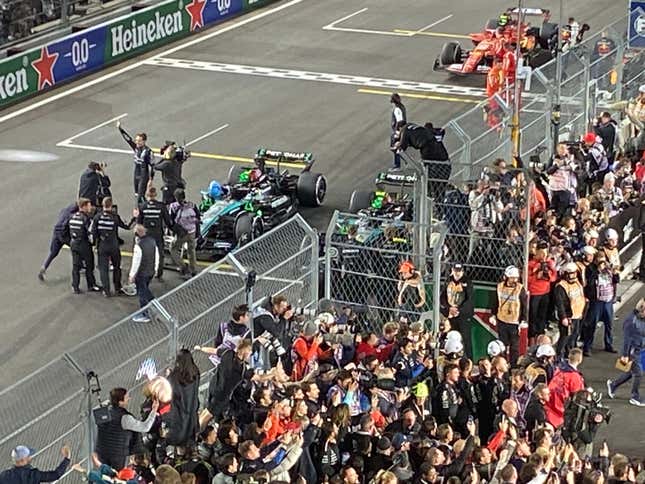
I felt a sense of pride as I watched both Russell and Hamilton slide between the coach doors of the Rolls-Royce Phantom that would whisk them off to the podium. Not that I actually had any part to play in the race, but I felt like a proud member of the Mercedes-Petronas F1 team after meeting everyone and rubbing shoulders with car parts in the pits. I felt particularly fortunate to see Russell, whom I had met and briefly chatted with the day prior, complete and win such a great race. The 50 laps of the Las Vegas Grand Prix were over surprisingly quick, and I’m glad there weren’t any big crashes or injuries. A huge congratulations goes out to all the teams, but especially the Mercedes-AMG Petronas team for such an impressive performance.
It was incredibly special for me to attend the Las Vegas Grand Prix in the first place, let alone under the gracious hospitality of the three-pointed star, and at a race that it earned a one-two finish in. What more could you ask for? An AMG GT63 S E Performance to drive back home? I had that too. Once more for good measure: I am the luckiest guy in the world.
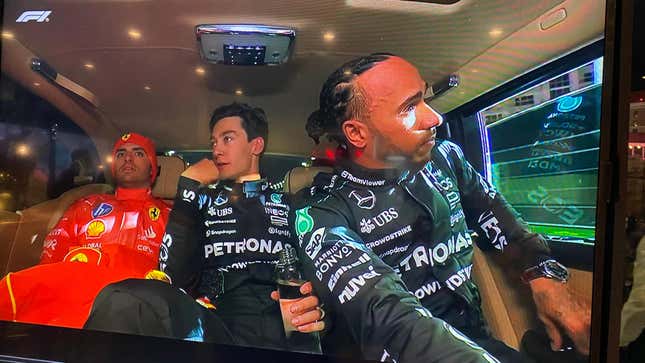
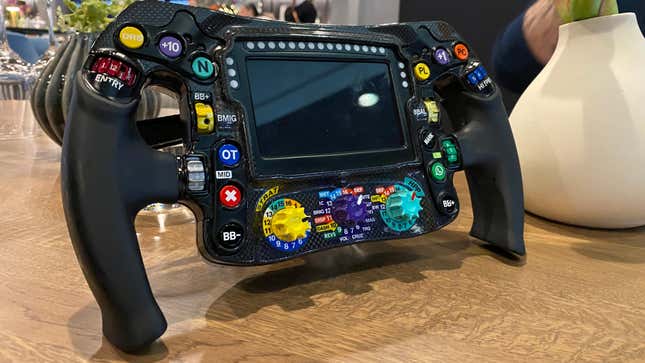
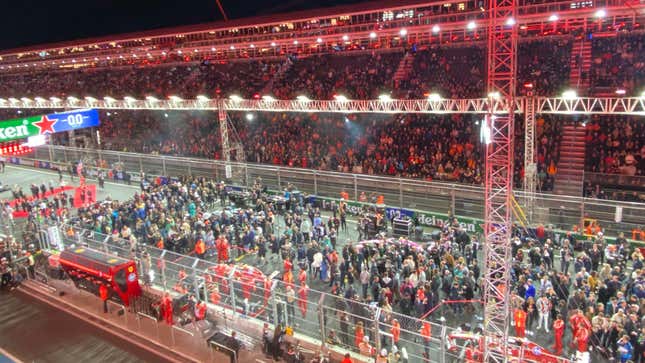
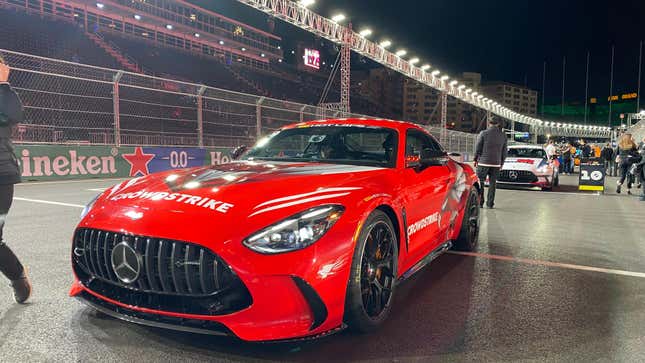
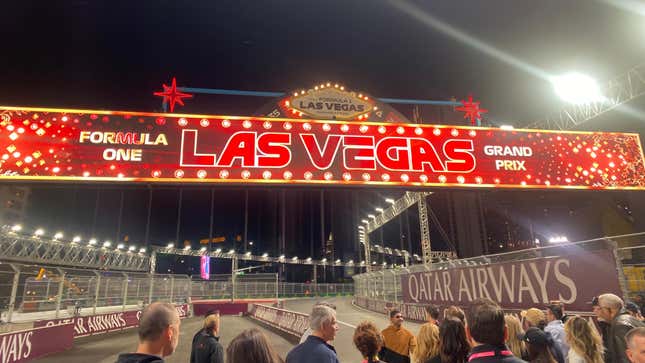
منبع: https://jalopnik.com/experiencing-the-las-vegas-grand-prix-through-the-eyes-1851727979
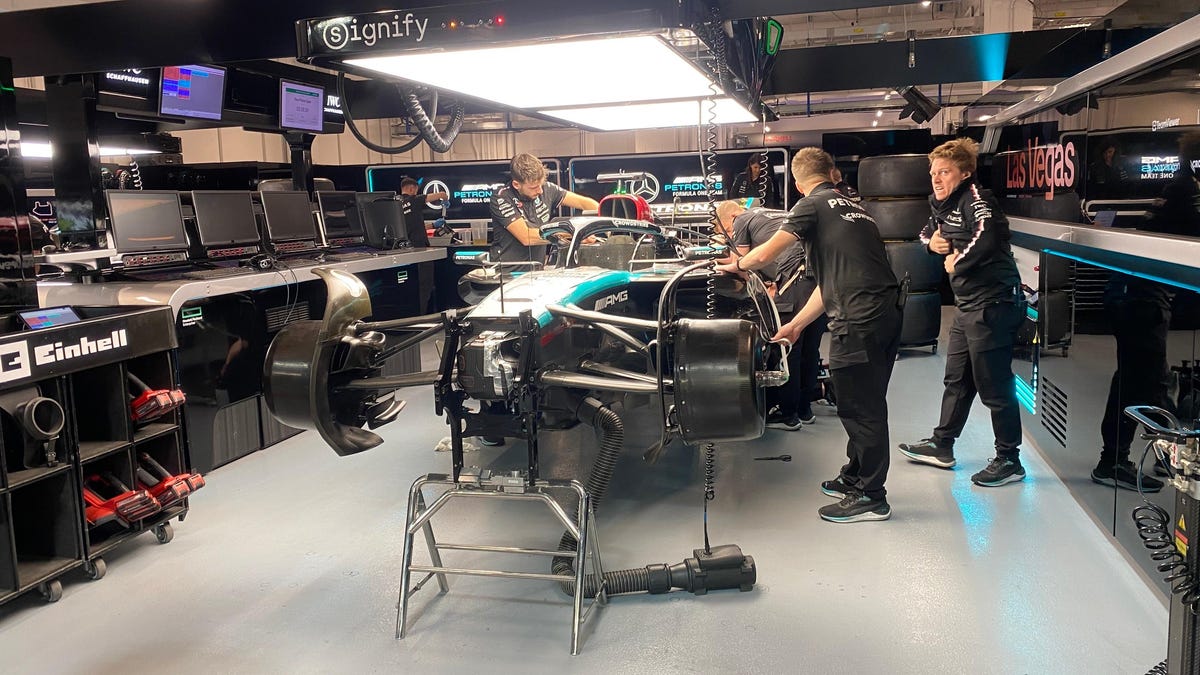
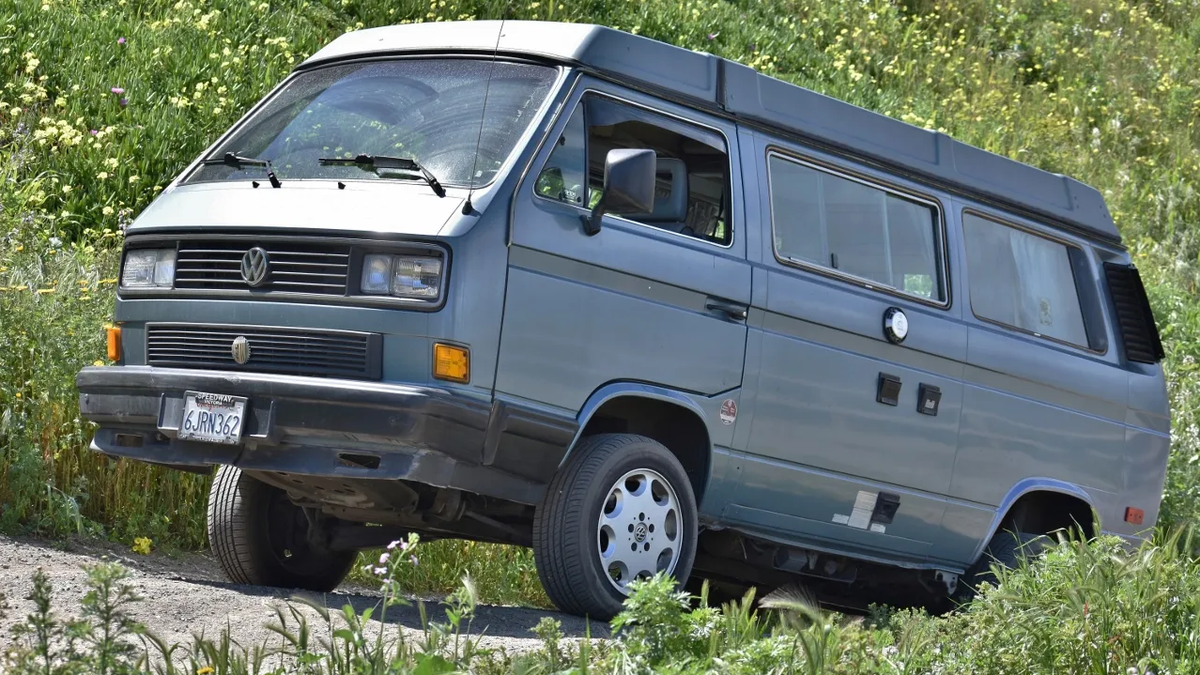

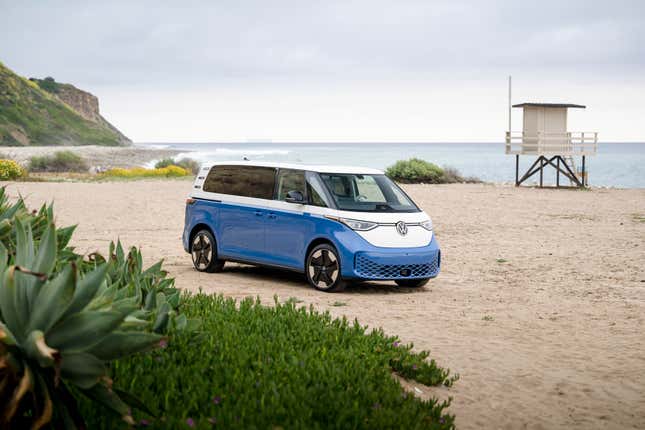
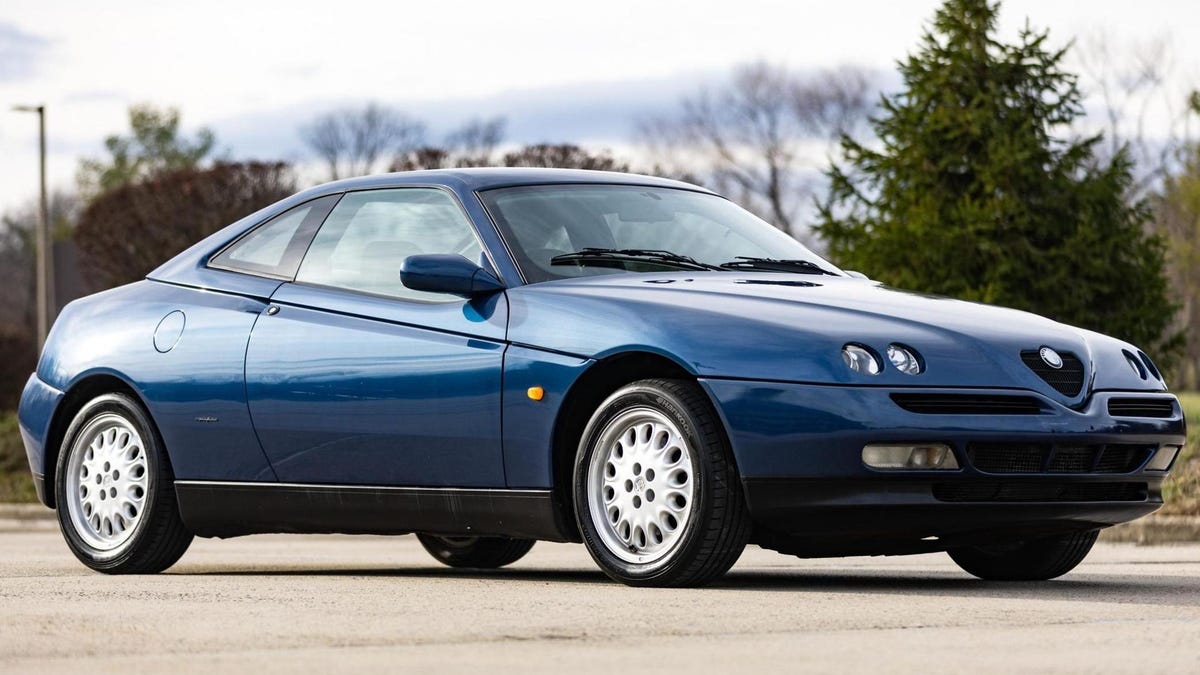
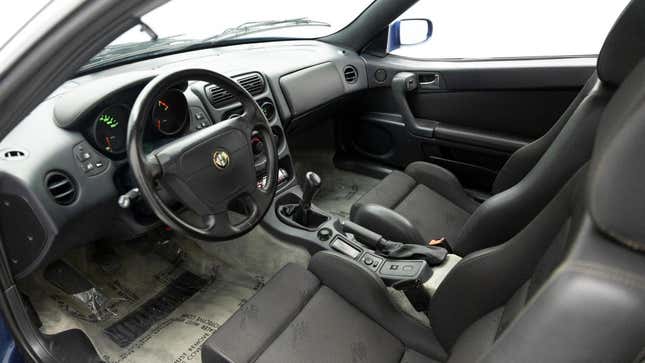
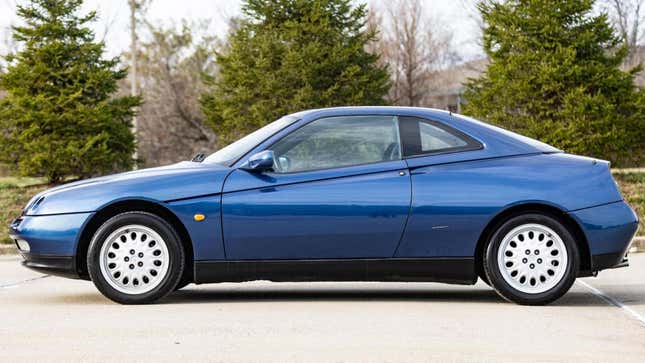

 تصویر: ماشین و مناقصه
تصویر: ماشین و مناقصه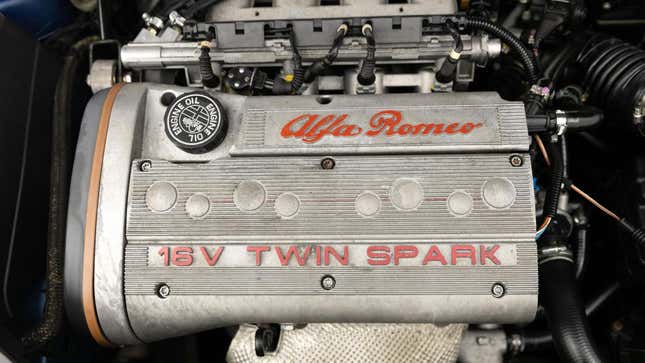
 تصویر: ماشین و مناقصه
تصویر: ماشین و مناقصه